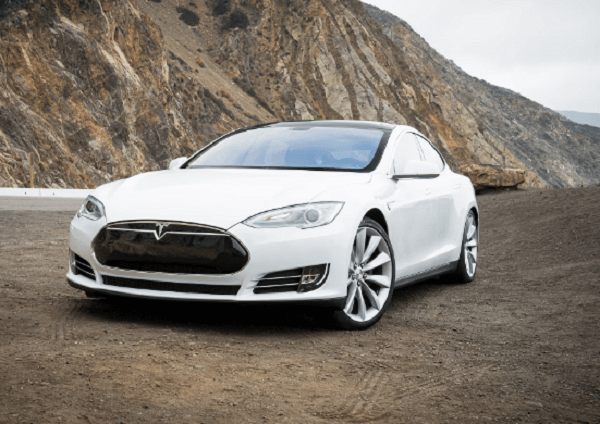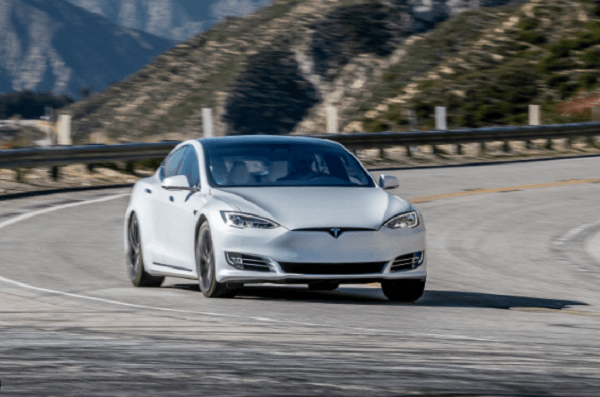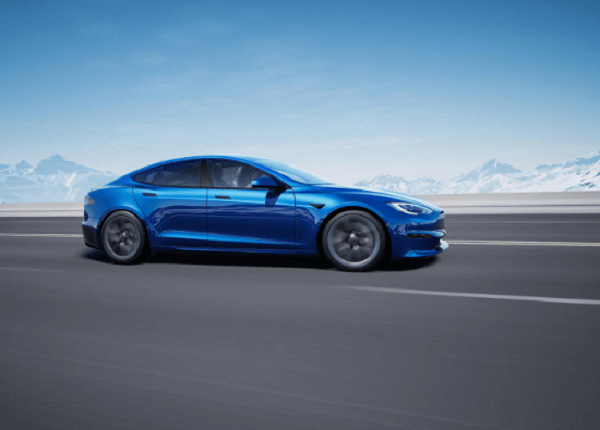Tesla Model S Years To Avoid – The Tesla Model S has been hailed as a pioneering force in the electric car revolution since its launch in 2012. As Tesla’s flagship model, it marked the beginning of a new era in eco-friendly transportation, integrating groundbreaking autonomous driving technology.
Despite its trailblazing advancements, prospective buyers and enthusiasts often wonder about specific years that might pose challenges or reliability concerns within the Model S lineup.

Manufactured at the Tesla Factory in Fremont, California, the Model S underwent iterations over the years, aiming to redefine the automotive industry’s perception of electric vehicles.
However, it’s important to note that not all Model S years showcase the same level of reliability and performance.
Several reports and user experiences have highlighted certain Model S years to avoid due to recurring issues, especially in terms of battery and power troubles.
Despite early roadblocks, the Tesla Model S stands out with impressive features like a remarkable range of up to 390 miles and an astounding top speed of 200 mph.
Its battery longevity is estimated to span between 200,000 to 400,000 miles, translating to around 13 to 27 years of service, assuming an average annual mileage of 15,000 miles.
However, real-world scenarios might see drivers upgrading before reaching these mileage marks.
Notably, the Model S comes with an 8-year or 150,000-mile battery and drive unit warranty, assuring its expected lifespan.
Reports suggest that most Model S cars comfortably exceed 100,000 miles with minimal battery deterioration, retaining around 70% to 80% of their original capacity even after 300,000 miles.
Notably, Tesla’s Autopilot system, an iconic feature in the Model S lineup, continues to evolve, offering enhanced driving experiences with features like Navigate on Autopilot, Traffic-Aware Cruise Control, and Autosteer.
Despite these advancements, certain Model S years may exhibit safety issues or construction quality concerns.
Tesla Model S Years To Avoid
The Tesla Model S stands as a beacon of innovation in the electric vehicle (EV) realm, revolutionizing the automotive industry with its cutting-edge technology and forward-thinking design. However, not all Model S years are created equal, with some exhibiting recurring issues and concerns that potential buyers should carefully consider.

Analyzing complaints logged by year according to data from carcomplaints.com sheds light on specific Model S years that have faced notable challenges:
- 2012: 0 complaints
- 2013: 9 complaints
- 2014: 4 complaints
- 2015: 3 complaints
- 2016: 6 complaints
- 2017: 1 complaint
- 2018: 0 complaints
- 2019: 1 complaint
- 2020: 0 complaints
Consistent issues have been recorded across various Model S years, many of which are covered by the standard 4-year/50,000-mile warranty but might become costly to repair once the warranty period expires.
Some prevalent problems reported by drivers include:
- Door knobs requiring replacement
- Air suspension errors
- Leaky sunroofs
- Touchscreen malfunctions
These issues, while not necessarily impacting the car’s drivability, could become a concern post-warranty and affect the overall ownership experience.
Moreover, the Model S has seen a notable number of recalls, with the majority occurring in the earlier model years:
- 2012: 5 recalls
- 2013: 7 recalls
- 2014: 5 recalls
- 2015: 5 recalls
- 2016: 6 recalls
- 2017: 1 recall
- 2018: 1 recall
- 2019: 0 recalls
- 2020: 0 recalls
Recalls varied, ranging from charging port malfunctions to safety-related concerns, such as faulty airbags and seat belt components.
Notably, the 2014 model faced a significant recall regarding the charging port, undermining the core functionality of an electric vehicle.
Delving into specific Model S years, it becomes apparent that some years presented more challenges than others:
Tesla Model S Years to Avoid
2013 Tesla Model S

The second model year faced nine major complaints, including exterior and interior accessories problems, electrical issues, and concerns about suspension and transmission. Although it didn’t have major recalls, it grappled with suspension failures, battery issues, and exterior accessory malfunctions.
2014 Tesla Model S
This year saw complaints centered around interior accessories, electrical problems, and transmission issues. A significant recall concerning the charging port plagued this model year, impacting the vehicle’s primary function as an EV.
Major Recalls Across Model S Years
- 2014: Charging port malfunction and overheating issues.
- 2015: A widespread recall due to front seat belt component faults.
- 2017: Recalls for faulty Takata airbags and malfunctioning parking brakes.
Despite these recalls and reported complaints, Tesla vehicles, including the Model S, generally receive high safety ratings. The National Highway Traffic Safety Administration (NHTSA) awarded the Model S a perfect five-star rating across all categories.
The Tesla Model S offers groundbreaking technology and performance, prospective buyers should meticulously evaluate specific model years to avoid potential issues post-warranty.
Best Used Tesla Model S To Buy
The Tesla Model S, a pinnacle in luxury electric sedans, burst onto the automotive scene in 2012, signaling a new era of cutting-edge technology and performance in the electric vehicle (EV) landscape.

For in search of a used Tesla Model S, pinpointing the most reliable model year becomes a pivotal consideration in securing a dependable and cost-effective investment.
Reliability plays a crucial role in the ownership experience, significantly impacting maintenance costs and peace of mind for Tesla enthusiasts. Determining the best-used Tesla Model S to buy requires meticulous consideration of the vehicle’s history and performance across various model years.
Here, we outline the most reliable Tesla Model S years available in the used car market, offering insight into dependable options that combine technological prowess with reliability:
- 2018 Tesla Model S
- 2019 Tesla Model S
- 2020 Tesla Model S
- 2021 Tesla Model S
- 2022 Tesla Model S
These five model years stand out as stellar choices for individuals seeking reliability and a seamless ownership experience with a used Tesla Model S.

As a buyer, avoiding unnecessary expenses while ensuring a trustworthy vehicle is paramount, particularly with an electric car.
Opting for these specific model years ensures a lower cost of ownership compared to less reliable years, providing peace of mind and financial stability for Tesla aficionados.
The Tesla Model S heralded for its innovative electric SUV design, has seen a decade of evolutionary releases. Selecting the best-used Tesla Model S involves weighing various factors, including technological advancements, battery longevity, performance metrics, and reported owner experiences.
These highlighted model years have consistently demonstrated reliability and stood the test of time, making them prime choices for prospective buyers seeking dependable luxury electric vehicles.
Tesla Model S Problems
The Tesla Model S stands tall as a pioneering force in the electric vehicle realm, acclaimed for its innovative design and cutting-edge technology.
However, like any automobile, the Model S isn’t exempt from certain recurring issues and concerns that potential buyers and owners should be aware of. Understanding these problems is crucial before investing in a Tesla Model S.
According to data compiled by getjerry.com, certain problems persist across various model years of the Tesla Model S. It’s prudent for prospective buyers and current owners to be well-informed about these recurring issues to anticipate potential challenges and take proactive measures:

Common Tesla Model S Problems
- Exterior Accessory Issues: Instances of reported troubles related to exterior accessories have surfaced, potentially impacting the vehicle’s aesthetics and functionality.
- AC and Heater Faults: Problems linked to the air conditioning and heating systems have been reported, affecting the comfort and climate control within the Tesla Model S.
- Interior Accessory Issues: Some owners have encountered interior accessory issues, which might impact the overall user experience and convenience inside the vehicle.
These problems can arise across various model years of the Tesla Model S, potentially posing challenges for both new and used car buyers. While these issues may not necessarily afflict every vehicle or become apparent immediately, they might manifest as the least reliable options within the electric vehicle lineup.
Staying informed about these Tesla Model S problems enables prospective buyers and current owners to navigate their ownership experience more confidently and proactively address any potential issues that may arise.
Is The Tesla Model S Worth It?
The sentiment suggests a split opinion. While the Tesla Model S is admired among Tesla car enthusiasts, some argue that it doesn’t offer sufficient value for its cost.
The advice is to opt for the most reliable options within the Model S lineup to mitigate potential issues during ownership.
Are Tesla Models S Expensive To Maintain?
Maintenance costs for Tesla vehicles, including the Model S, appear higher than the average for conventional vehicles. Reports suggest a maintenance cost of around $832 per year, notably exceeding the average.
Owners have reported various failures related to design and technology. Regular and proactive maintenance is recommended to extend the vehicle’s lifespan.
Are Tesla Models S Generally Reliable?
While certain Tesla Model S models are deemed reliable, the overall reliability of the vehicle, according to getjerry.com and whatcar.com, seems to fall below that of other luxury electric vehicles. Reports indicate that the Tesla Model S ranks lower in reliability when compared to the average across all years, highlighting numerous issues with this model.
Conclusion
The discussion surrounding the Tesla Model S reveals a mixed landscape for potential buyers. While the Model S stands as a technological marvel and a symbol of electric vehicle innovation, concerns about its worth, maintenance costs, and overall reliability persist.
Potential buyers should approach their decision with careful consideration. While the Model S has its admirers among Tesla enthusiasts, there are arguments against its perceived value for the cost.
Reports indicating higher-than-average maintenance expenses, along with various reported failures in design and technology, raise concerns about the vehicle’s long-term ownership experience.
Moreover, the Model S’s overall reliability, as per assessments from different sources, appears to fall short when compared to other luxury electric vehicles. This suggests that while certain Model S models might be reliable, the average across all years indicates a lower level of reliability.
Thorough research, understanding the recurring problems associated with different model years, and proactive maintenance are vital steps to ensure a more satisfactory ownership experience.
In the pursuit of a Tesla Model S purchase, being informed about the potential challenges and considering the most reliable years is key to avoiding unnecessary issues and enjoying a more trouble-free ownership journey.
Related Articles About TESLA:
- Most Expensive Tesla
- Most Reliable Tesla Models
- Why Are Tesla Tires So Expensive?
- Why Are Tesla So Popular?
- Why Are So Many Used Teslas For Sale?
- How To Change Horn on Tesla?
- Tesla Model Y Years To Avoid
- Tesla Model 3 Years To Avoid
- Tesla Model X Years To Avoid
- Worst Used Cars To Buy